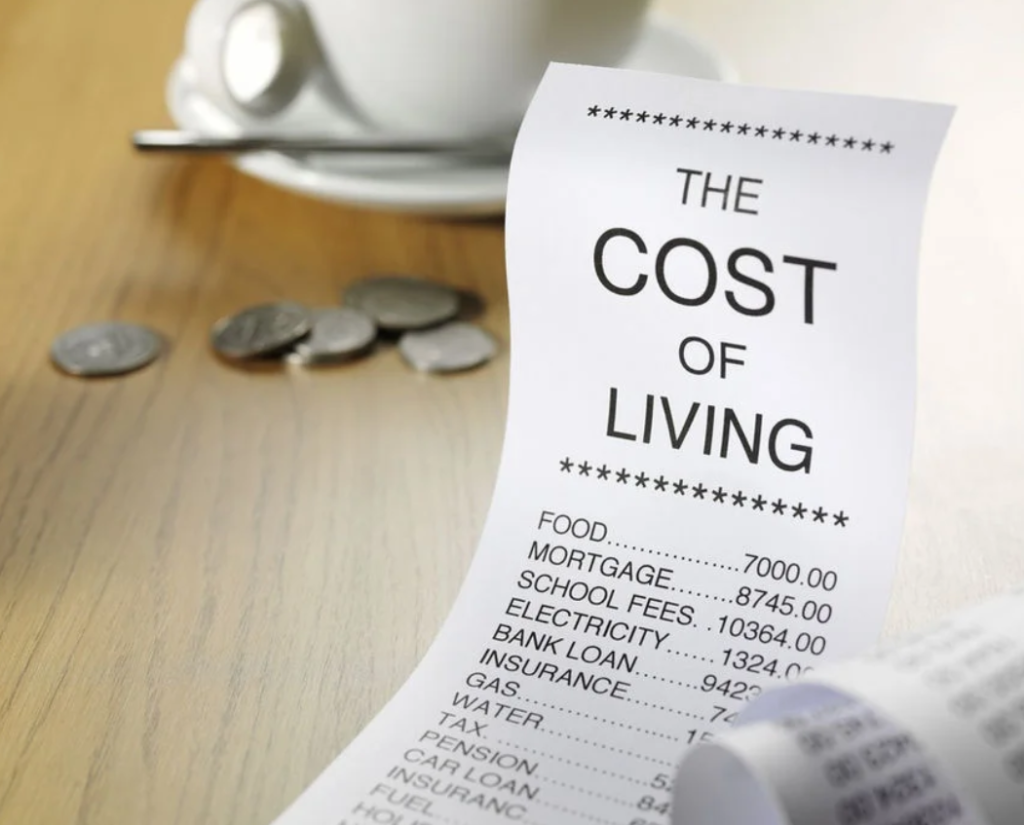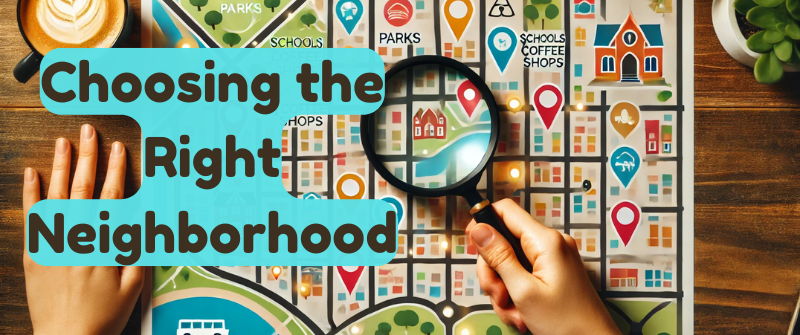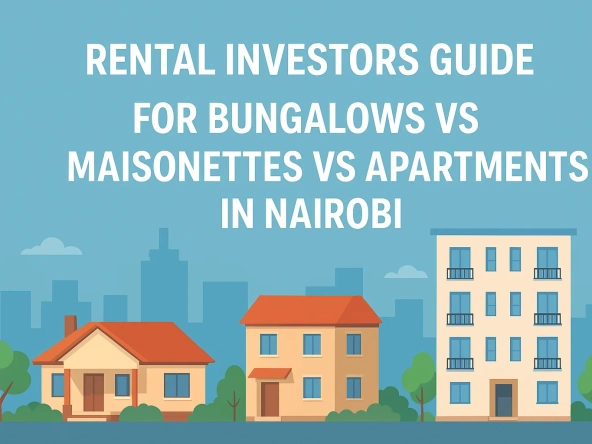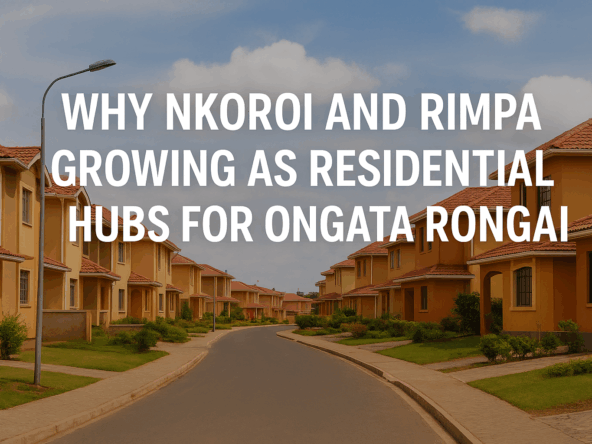Choosing the right neighborhood is just as important as selecting the right home. The location you choose will impact your lifestyle, convenience, safety, and even the future value of your investment.
Whether you are buying a home or renting, finding the ideal neighborhood requires careful consideration of several factors.
Below is a comprehensive guide on how to choose the right neighborhood for your needs.
But first things first…..
Define your Priorities and Lifestyle Needs

Before you start exploring different neighborhoods, identify what is most important to you and your family. Consider factors such as:
- Commute time: How close is the neighborhood to your workplace or business?
- Amenities: Do you need proximity to schools, hospitals, shopping malls, parks, or entertainment spots?
- Noise level: Would you prefer a quiet suburban setting or a vibrant city environment?
- Family-friendliness: Are you looking for a neighborhood that is ideal for raising children?
- Future plans: Do you plan to settle in the neighborhood in the long term, or is this a temporary choice?
You’ll also want to decide on the type of home that suits your lifestyle. Are you looking for an apartment or your own compound for a more private setting, or would you prefer something more central with access to urban conveniences?
10 Considerations when Choosing a Good Neighborhood
Finding the perfect neighborhood is just as important as choosing the right home. Below are the key factors to consider, from safety and amenities to cost of living and future growth, to make the best decision for your lifestyle and investment.
1. Research the Safety and Security of the Area
Safety is a top priority when choosing a neighborhood. To assess safety levels:
- Check crime rates: Research local crime statistics using online databases, local police reports, or neighborhood watch groups.
- Visit the area at different times: Drive through the neighborhood during the day and at night to observe security conditions.
- Speak to residents: Engage with locals to get insights about safety concerns and the general living environment.
- Check street lighting and security measures: A well-lit neighborhood with visible security patrols and CCTV cameras is generally safer.
2. Evaluate the Cost of Living

Affordability plays a key role in selecting the right neighborhood. Consider:
- Property prices: Compare house prices and rental rates in different neighborhoods to match your budget.
- Property taxes: Some areas have higher property taxes, which can impact the overall cost of homeownership.
- Utility costs: Electricity, water, and garbage collection fees can vary depending on the area.
- Cost of groceries and services: Living in an upscale neighborhood may mean paying higher prices for everyday essentials.
3. Assess the Quality of Schools and Educational Facilities
For families with children, access to good schools is a crucial factor. To determine the quality of education in a neighborhood:
- Check school rankings: Research national and local school performance ratings.
- Visit schools: Tour schools to evaluate their facilities, teaching staff, and curriculum.
- Speak with parents: Engage with parents in the area to learn about their experiences with local schools.
- Consider proximity: A shorter commute to school can save time and reduce transportation costs.
4. Examine Transportation and Accessibility
A good neighborhood should offer convenient transportation options. Key aspects to evaluate include:
- Road networks: Are the roads well-maintained and free from frequent traffic congestion?
- Public transport availability: Check for bus stops, train stations, and taxi services in the area.
- Walking and biking options: If you prefer a pedestrian-friendly neighborhood, look for areas with sidewalks and biking lanes.
- Access to major highways: Proximity to major roads can make commuting easier but may also contribute to noise pollution.
5. Explore the Local Economy and Employment Opportunities

A thriving local economy contributes to property value appreciation and job opportunities. Factors to consider include:
- Job market: Are there industries, companies, or business hubs in the area?
- Business opportunities: If you plan to start a business, check for local demand and competition.
- Economic growth: A growing economy can enhance property investment returns.
- Development projects: Look for upcoming commercial and residential developments that could boost the area’s potential.
6. Check for Social and Recreational Amenities
A neighborhood with diverse social and recreational amenities can enhance your quality of life. Look for:
- Parks and green spaces: Ideal for families, fitness enthusiasts, and pet owners.
- Shopping and dining options: Proximity to supermarkets, restaurants, and shopping centers can be convenient.
- Healthcare facilities: A good neighborhood should have hospitals, clinics, and pharmacies nearby.
- Entertainment venues: The presence of theaters, sports complexes, and cultural centers can be a plus.
7. Investigate the Community Culture and Demographics
Different neighborhoods have unique cultures and demographics. To find a good fit:
- Attend community events: Festivals, farmers’ markets, and local meetups can provide insights into the area’s culture.
- Observe resident interactions: Are people friendly and welcoming?
- Check demographic data: Some areas cater to young professionals, while others are more family-oriented or senior-friendly.
8. Consider Future Growth and Development Plans

A neighborhood’s future growth can impact property values and living conditions. Research:
- Urban planning initiatives: Check government plans for infrastructure development.
- Real estate trends: Is the area attracting investors and new developments?
- Zoning laws: Ensure future developments align with your preferences (e.g., avoiding industrial expansion near residential zones).
9. Conduct Multiple Visits and Compare Options
Before making a final decision:
- Visit at different times: Assess traffic, noise levels, and general activity during mornings, afternoons, and evenings.
- Compare multiple neighborhoods: Weigh the pros and cons of various areas before committing.
- Trust your instincts: If a place feels right and meets your needs, it’s likely a good fit.
10. Choose the Right Type of Home
The type of home you select will also influence your neighborhood experience. Are you considering a bungalow or maisonette for more privacy and space, or would a modern apartment suit your lifestyle better?
Understanding your housing preferences will help narrow down your options.
Qualities of a Good Residential Neighborhood

Here are some qualities of a good residential neighborhood that you can incorporate into your article:
- Safety and Security – Low crime rates, well-lit streets, and presence of security measures such as neighborhood watch programs or gated communities.
- Good Infrastructure – Well-maintained roads, reliable water and electricity supply, proper drainage, and waste disposal systems.
- Proximity to Essential Amenities – Easy access to schools, hospitals, shopping centers, public transport, and recreational areas.
- Strong Community Spirit – Friendly and welcoming neighbors, social events, and active resident associations.
- Clean and Green Environment – Availability of parks, tree-lined streets, and minimal pollution.
- Reliable Public Transportation – Well-connected road networks and access to buses, trains, or taxis for easy commuting.
- Affordability and Cost of Living – Reasonable property prices and rental rates, along with manageable living expenses.
- Low Noise and Air Pollution – Away from noisy industries or highways, providing a peaceful and healthy living environment.
- Future Growth Potential – Presence of ongoing or upcoming development projects that enhance property value over time.
- Zoning and Land Use Regulations – Well-planned residential areas with clear land use policies that prevent encroachment of unwanted commercial or industrial activities
Final word
Choosing the right neighborhood is a crucial step in finding your dream home or rental property.
By considering factors like safety, cost of living, amenities, and future development, you can make an informed decision that aligns with your lifestyle and long-term goals.
Take your time, do thorough research, and ensure the neighborhood you choose enhances your comfort, convenience, and overall quality of life.



